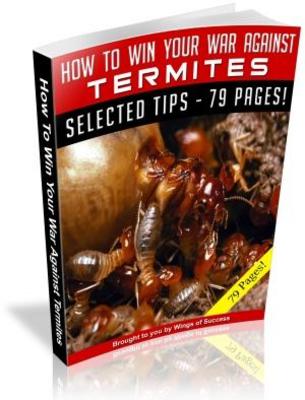$8.95
Download NowSold by dksproducts on Tradebit
The world's largest download marketplace
3,251,435 satisfied buyers
The world's largest download marketplace
3,251,435 satisfied buyers

How To Win Your War Against Termites
Even the mention of a termite can send terror into the heart of a homeowner. Many people know that a termite can cause huge damage to a home and when you take one termite and add it to another termite and then another and another and another, you might find yourself with a home that is not only unsound but extremely difficult to sell and live in. Many people know about the termite, but not many people know specifics about this pesky insect.
A termite – also known as a white ant – is a member of a group of social insects much like regular ants. They most often feed on dead plant material including wood, leaf litter, and soil. The termite can cause huge damage to structures such as houses, building, crops, and forests.
The termite superficially resembles an ant and is called a white ant only because of their social behaviors and similar size. However, the regular termite is softer, whiter, shorter-legged, fatter and generally much slower moving. In actuality, a termite is much more similar to the common cockroach. Some experts feel like the termite belongs in its own classification of insects instead of being clumped together with ants in the Hymemoptra class or a super order which contains all of them called the Dictyoptera class.
The common termite has a biting mouthpart and their soft bodies are rarely longer than one centimeter in length. As a colony, they typically inhabit dark nests and tunnels, only venturing out when the winged alates emerge to leave their parent colony, when constructing shelter or, in the case of grass- and leaf-litter-feeders, when harvesting their food. The alate is basically a baby termite growing into a full blown termite and getting ready to venture out into the world to find their own food source to decimate!
As with ants, the termite resides in a colony along with other termites. That is why they are referred to as social insects. Termite colonies can number anywhere from hundreds to even millions of inhabitants. They work together to survive and use self-organized swarm intelligence to obtain food sources and sustain the colony. Just as with ants, there is a certain hierarchy within the colony. It is usually “ruled” by a queen and there are workers, soldiers, nymphs, and reproductive termites responsible for re-populating the colony
File Data
This file is sold by dksproducts, an independent seller on Tradebit.
| File Size | 2 megabytes |
| File Type |
